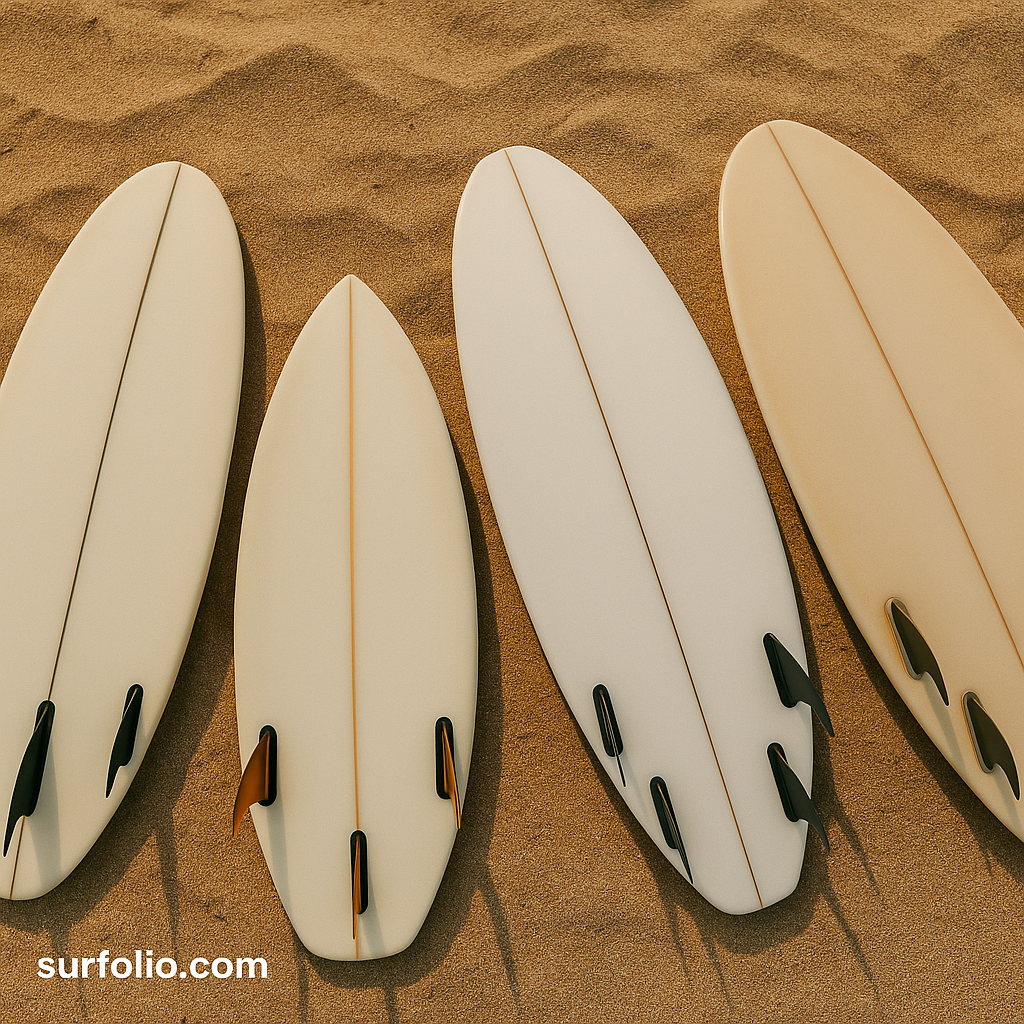
The Role of Fins in Surfing
Surfboard fins are like a car’s tires — they control direction, grip, and stability.
Without fins, your board would slide uncontrollably across the face of a wave.
Different fin setups dramatically change how your board performs. Understanding them helps you fine-tune your ride — whether you want more drive, looseness, or speed.
Single Fin: Classic Style and Flow
Best for: Longboards and retro shapes
Single fins were standard in the early days of surfing, built for smooth lines and drawn-out turns.
Performance traits:
- Excellent stability and hold in trim
- Encourages flowing, graceful surfing
- Less responsive for quick maneuvers
You’ll find single fins on longboards and classic mid-lengths — ideal for surfers who love style over speed.
Twin Fin: Loose, Fast, and Fun
Best for: Small-wave performance
Twin fins first gained popularity in the 1970s, offering a looser, skate-like feel.
Performance traits:
- Speedy down the line
- Great release for playful turns
- Less stability in steep or powerful waves
Twin setups are perfect for surfers who like to carve with freedom and enjoy a fast, fun ride in smaller surf.
Thruster (Three-Fin): The All-Around Performer
Best for: Most modern shortboards
Invented by Simon Anderson in 1980, the thruster became the gold standard for performance surfing.
Performance traits:
- Balanced control and maneuverability
- Reliable drive through turns
- Works in nearly all wave conditions
The center fin adds stability, while the side fins generate drive and hold. It’s the go-to choice for most surfers today.
Quad Fin: Speed and Power
Best for: Fast, hollow, or powerful waves
Quad setups combine the best of twins and thrusters — speed with extra control.
Performance traits:
- Explosive drive down the line
- Excellent hold in steep barrels
- Slightly less pivot in tight turns
They shine in bigger surf or reef breaks, where you want to maintain speed and grip through heavy sections.
Five-Fin: The Versatile Hybrid
Best for: Surfers who like to experiment
Five-fin setups don’t mean you ride all five at once — they’re designed so you can switch between thruster and quad configurations.
Performance traits:
- Total flexibility to adapt to conditions
- Lets you feel the difference between setups
- Adds a bit of weight but offers unmatched versatility
Perfect for surfers chasing different sensations from the same board.
Fin Materials and Shapes Matter Too
- Fiberglass: Stiff, powerful turns
- Plastic: Flexible and forgiving for beginners
- Carbon fiber: Light and responsive for advanced riders
Fin size and rake (angle) also shape how your board handles:
- Larger fins: More hold and control
- Smaller fins: Looser and faster
- More rake: Longer, drawn-out turns
- Upright shape: Quick, snappy pivots
Every small change tweaks your board’s personality.
How to Choose the Right Setup
| Your Goal | Ideal Fin Setup |
|---|---|
| Smooth, classic lines | Single fin |
| Fast and playful in small waves | Twin fin |
| Balanced all-around performance | Thruster |
| Maximum speed in barrels | Quad |
| Adapt to any condition | Five-fin |
Final Thoughts
Your fins are more than accessories — they’re your board’s steering system.
Experiment with different setups and feel how each one changes your connection to the wave. Some days call for drive and control; others demand looseness and play.
When you understand your fins, you don’t just surf better — you surf smarter.
